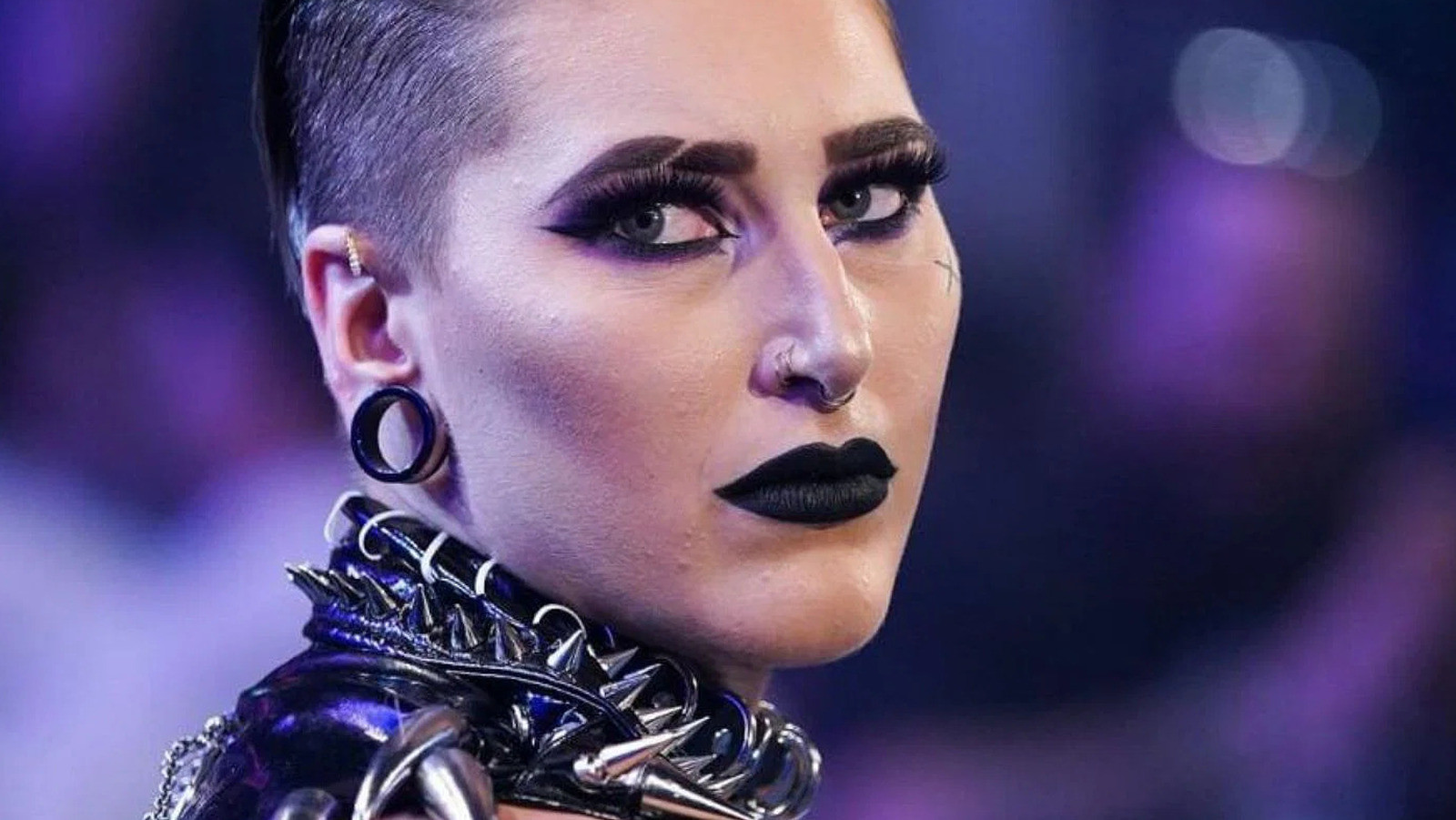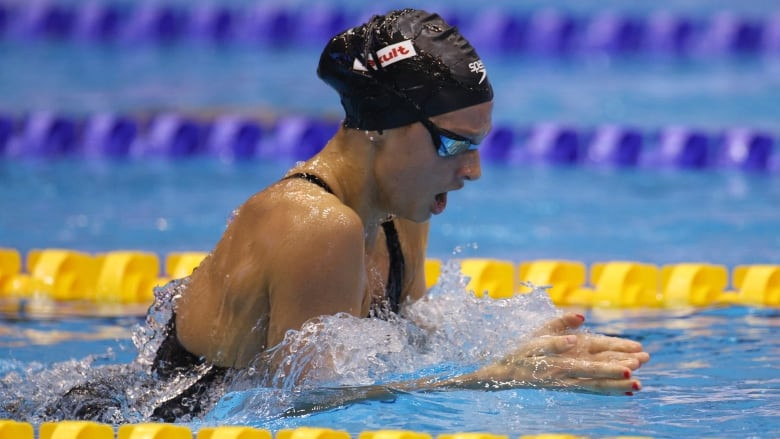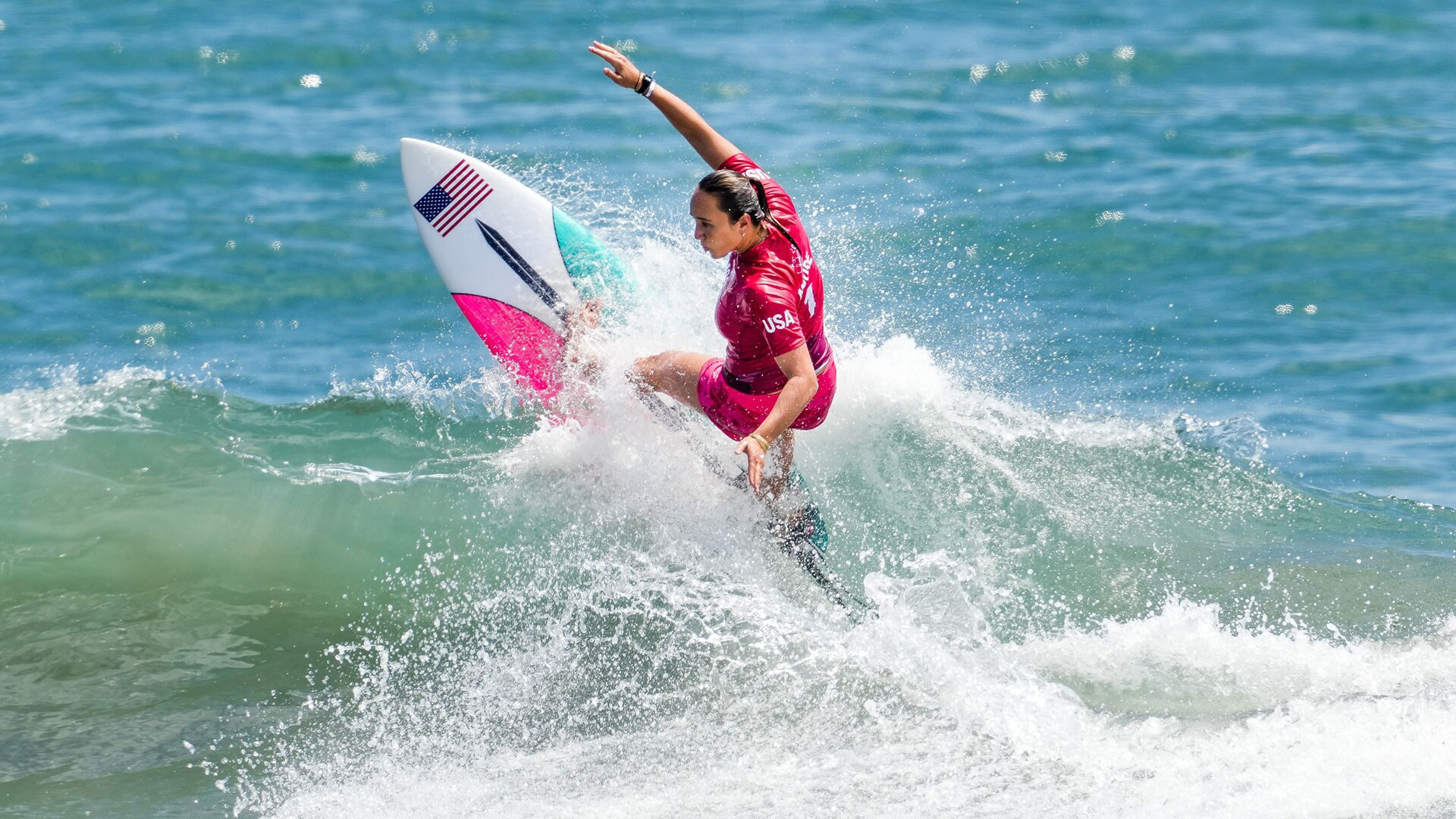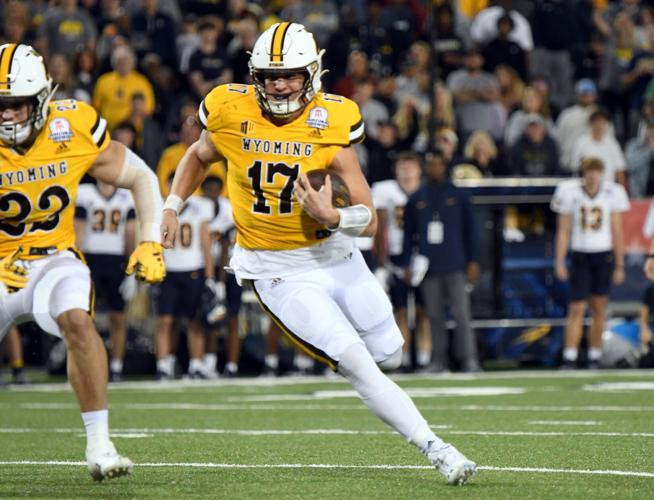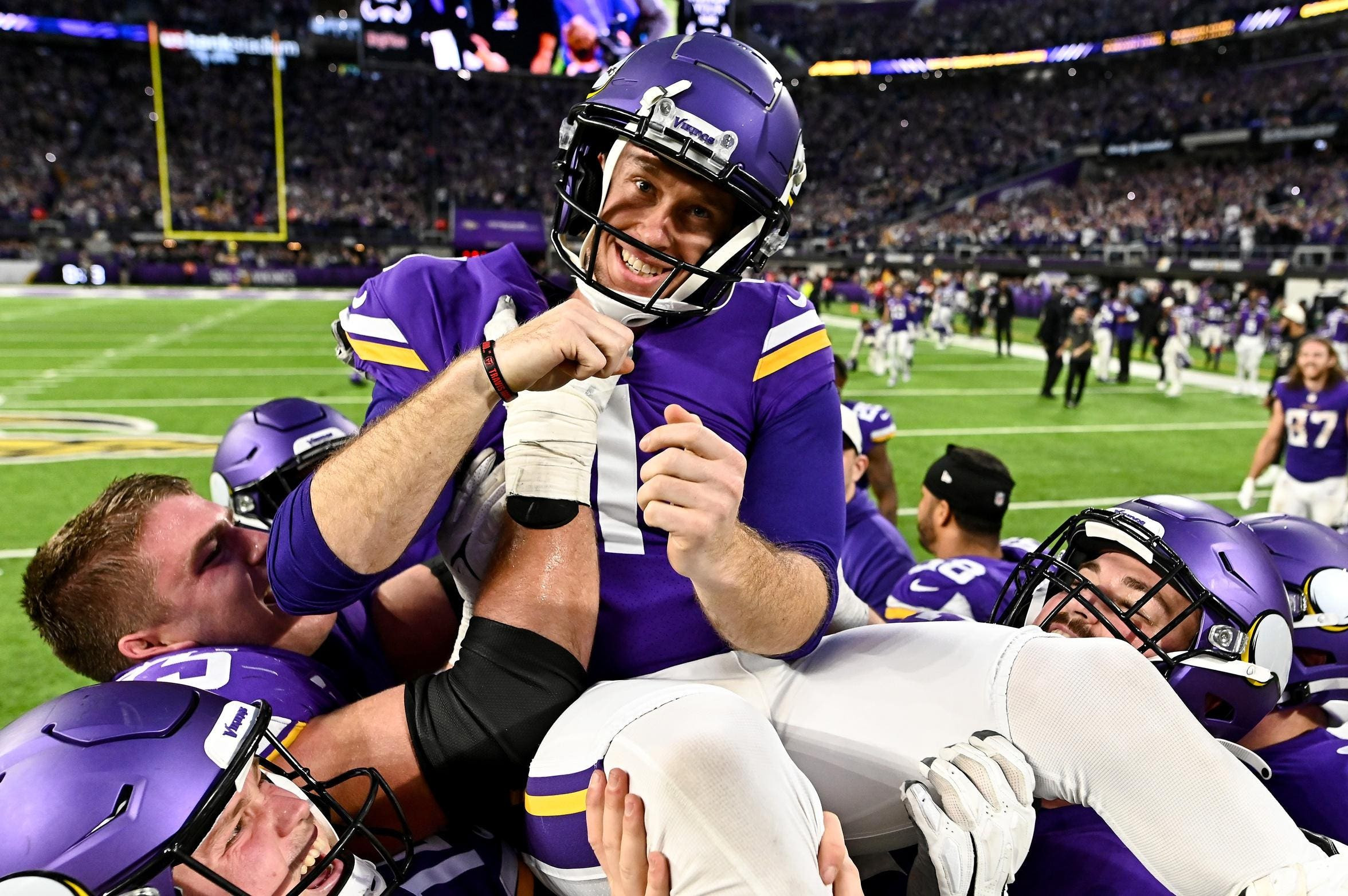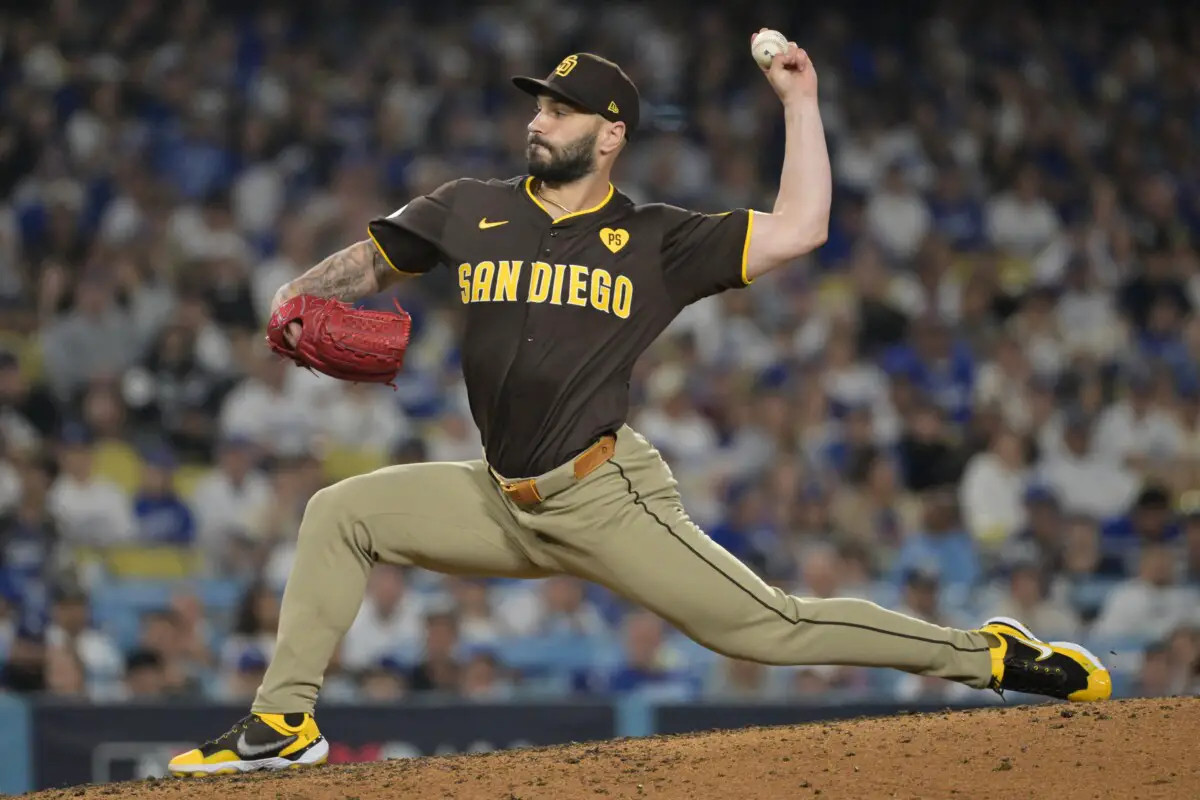At its various peaks of popularity, WWE's ability to cross over into the realms of sports and pop culture was seamless. The success of the WrestleMania's inaugural installment in 1985 was largely due to the vast amount of celebrities on hand. From Muhammad Ali and Mr. T to Cyndi Lauper and Liberace, every one of them contributed to The Show of Shows becoming an annual extravaganza and global sensation. World-renowned boxer Mike Tyson's involvement in the WrestleMania XIV main event helped legitimate "Stone Cold" Steve Austin as the face of the franchise and brought new eyes to the product that was about to take off with the Attitude Era. Even World Championship Wrestling, best known in its heyday as WCW, managed to capture the attention of major media outlets with Karl Malone and Dennis Rodman competing in a pay-per-view tag team main event opposite of each other immediately following the Utah Jazz and Chicago Bulls' iconic NBA Finals series in 1998. Somewhere along the way, wrestling lost that "cool" factor, and contrary to popular belief, WWE's incorporation of the TV-PG rating in 2008 wasn't entirely to blame. Athletes and other notable names continued to make occasional appearances on WWE programming, including as part of Raw's "guest host" era that nearly killed the quality of the show for two years. WWE's desperate attempt to revive its status as a staple in society—coming off as more manufactured than it did organic—actively drove away an alarming portion of its remaining fanbase. Pro wrestling was never considered an upper-class art form, but following its fall from grace as an accepted piece of pop culture, the industry gradually gained a reputation for being a lowly form of entertainment. However, the overwhelmingly positive response to the company's presence at the first-ever Fanatics Fest in New York City the weekend of Aug. 16 proved WWE's mainstream appeal may finally be back to where it once was.
WWE Frenzy at Fanatics Fest
WWE's WrestleMania Fan Axxess event has gone through countless iterations since its inception in the late 1980s, recently being resurrected as WWE World this past spring. It's arguably the biggest pro-wrestling fan convention of its kind, complete with exhibits, memorabilia, merchandise, meet-and-greet opportunities and more. Fantatics Fest at the Javits Center in New York City encompassed not only WWE but also the MLB, NBA, NHL, NFL, UFC and other sports organizations. Current and future Hall of Famers such as Derek Jeter, Tom Brady and Kevin Durant were available for photos and autographs throughout the weekend, yet it was the WWE talent who sold out soon after going on sale. Cody Rhodes, Rhea Ripley, Drew McIntyre, CM Punk, Rey Mysterio, Bianca Belair and many others stole the weekend with long lines for their meet-and-greets and panels. Additionally, the patented make-your-own-entrance area was the busiest and most entertaining of all the "activations" the event had to offer. WWE outshining virtually every sports organization in attendance is enough of an indicator that wrestling is, in fact, the hot ticket right now. It was wise to emphasize the element of fun and remind former fans what they've been missing out on. In turn, the sports world hasn't hesitated to capitalize on WWE's newfound buzz. Jey Uso's infectious entrance music was played during an NBA playoff game in May. Roman Reigns' walkout song also went viral over SummerSlam weekend for being played at a nightclub. On WWE TV this year alone, top-tier NBA players Tyrese Hailburton and Jalen Brunson went face-to-face in a SmackDown ring at Madison Square Garden, a confrontation the crowd clearly approved of based on its raucous reaction. George Kittle, a well-documented WWE enthusiast, was shown sitting ringside for his friend Bayley's big championship win at WrestleMania 40, one year removed from getting in the ring for a segment with Pat McAfee on The Grandest Stage of Them All. Treading that fine line between sports and entertainment—two terms WWE has been intentionally synonymous with for decades to avoid associating with its wrestling roots—without it feeling forced is what gives the product that certain spark it's long been lacking. The relevancy of wrestling during the Attitude Era in particular may be forever unmatched, but WWE is doing everything right when it comes to regaining the goodwill of its audience and making headlines for the right reasons while doing so.
The Dark Days of WWE
One doesn't have to venture too far back in the WWE archives to relive one of its lowest creative points ever and realize why change at the top was imperative to save the company from self-sabotage. Although the pandemic era was notorious for not having any fans present, WWE's creative woes were already underway. If anything, the empty arenas created a unique environment for a time. Rather, it was 2018 and 2019 that did the most damage to the WWE brand. Both years had their fair share of highlights, most notably KofiMania and Becky Lynch's stock skyrocketing, but the cringeworthy content the audience had to endure along the way was not worth it. It was during this period that Bray Wyatt debuted his Fiend persona, only to have it ravaged by bad booking. The 24/7 Championship was introduced and immediately wore out its welcome. The rules of the Brand Split were ignored, wrestlers wanted out, camera shots were nauseating to watch, commentary was distracting, part-timers were overexposed in the main event scene, and very few Superstars felt special. Plus, the babyface Roman Reigns experiment failed miserably and NXT newcomers were misused. Once The Big Dog was showered with dog food on SmackDown in early 2020, it wasn't surprising to see pop-culture icons stray from wanting anything to do with WWE. Any fan unfortunate to find themselves watching WWE TV at that time experienced the epitome of embarrassment. Vince McMahon didn't seem to mind, essentially inviting viewers to change the channel and journey over to their competition.
How Triple H Turned the Tide in WWE's Favor
McMahon's ultimate dismissal from WWE was undoubtedly overdue, as evidenced by how drastically the company's creative direction changed when he was ousted from power. Triple H, president Nick Khan and the rest of the WWE brass that makes up the new guard have demonstrated they're in touch both with what fans want to see from week to week as well as how they can attempt to further build their audience to make new fans. That's where the expansion into entertainment and sports will be beneficial. Under McMahon, Raw and SmackDown lost much of their luster in the years following the Attitude and Ruthless Aggression Eras. Star power diminished, and compelling storylines were harder to come by. The in-ring action improved, but every other aspect of the product suffered significantly. Triple H was responsible for creating a true alternative before in NXT, so he could do it with the main roster if the opportunity presented itself. McMahon's abrupt exit in 2022 paved the way for Triple H to start slowly but surely rehabilitating the overall creative direction. Two years on, he has done just that. All Elite Wrestling established an identity as a legitimate challenger brand when WWE TV was in the doldrums in 2019. The opposition recruiting their top talent and creating stars of their own forced WWE to put their best foot forward, at least once Triple H took the reins. There's been a lot to like about AEW in 2024 and there are numerous things they'll always excel at over WWE, but the turning of the tide is evident in the latter's many arena sellouts, stable ratings, and record-setting viewership for premium live events. Straightforward and engaging storytelling has been pivotal in renewed interest in the product. The Bloodline is perhaps the most prominent example, but the rise of Cody Rhodes, CM Punk and Drew McIntyre's ruthless rivalry, and everything making much more sense have also been important factors. Above all else, the electric atmosphere at almost every WWE event these days sends the message that catering to the casual audience has been the most effective formula behind the promotion's latest boom period. For the first time in over 20 years, it's cool to watch WWE again.
The Game's Approach to International Talent
A WWE star has explained how Triple H is taking a new approach to international talents and how it balances different wrestling styles. World Heavyweight Champion GUNTHER comments on Triple H having a “very different” approach to previous management, specifically for international wrestlers. GUNTHER said to Sports Illustrated: “Triple H, the Chief Content Officer of the WWE, has a very different approach than the previous WWE leadership. He is open to integrating more external influences and I believe that’s the right way to go. There are now many international wrestlers under contract with the WWE and they all bring different wrestling cultures and styles with them. That ensures a balanced mix.” While the incorporation of different styles from international talent is evident, there has also been a clear step towards international events under the Paul Levesque regime. This weekend WWE will set up in Berlin, Germany for both an episode of SmackDown as well as an upcoming premium live event. WWE Bash in Berlin is set to feature a World Heavyweight title match where GUNTHER looks to defend his title against Randy Orton after having won it at SummerSlam.
Triple H's Transformation of WWE: From Creative Woes to a New Era
Over the last couple of years, WWE has seen a lot of change. From Vince McMahon’s initial retirement, to the sale of WWE to Endeavor (and the formation of TKO with UFC), to McMahon’s return & lawsuit, to Triple H’s reign in charge of WWE creative, the company has been through a whirlwind of twists, turns, and changes. From legendary veterans to some of the newer wrestlers, WWE's current crop of stars have some great ring names. Today’s WWE is predominantly run by Triple H and Nick Khan, and they have done a lot to try and fix things that were not liked about the company. There are several things that WWE fans hated about the product and company which have now been addressed, and here are some examples.
The Global Expansion
The vast majority of WWE’s major shows took place in North America, aside from WWE striking a controversial deal with Saudi Arabia. Despite having “World” in the name of the promotion officially for many years, WWE did not feel like a “global” entity, alienating many fans (especially when it comes to the foreign heel schtick). However, Triple H & Nick Khan have embraced different countries and culture, taking WWE PLEs to Scotland, Wales, Puerto Rico, Australia, Germany, France, and likely many other places in the future too. WWE now once again feels like a part of the wider world, bringing aboard so many more fans.
A New Culture of Respect
The number of stories which emerged of poor talent treatment, abuse of injured names, mental health troubles, and more were simply unacceptable, and it led to fans being frustrated with WWE (much like how much of the talent would have been feeling too). In today’s WWE, it seems as though the culture is friendly, amicable, and good for worker’s rights and the health of talent, both mentally and physically. This is something which fans really love to see as it is reflected in the happiness of wrestlers when they are away from the ring.
Midcard Prestige Restored
Both the Intercontinental & United States Championships have been a sorry sight for decades, feeling irrelevant and unimportant. However, Triple H sought to change that immediately, and he has worked tirelessly to repair the prestige of both belts. Ever since the regime change, these titles have felt more important than they have for years - and consistently too. Champions such as Gunther, Logan Paul, Seth Rollins, LA Knight, Sami Zayn, and others have proved to be effective in fixing something which fans hated.
Wrestlers Keep Their Names
It is understandable for WWE to want to own the intellectual property of those on-screen, leading to name changes for wrestlers. However, this led to some awful names like “Butch”, and the shortening of names to the likes of “Theory”, “Ciampa”, and more. Triple H & Nick Khan are clearly not as fussed by this, bringing back first names, giving Pete Dunne his name back, and allowing signed wrestlers like Jade Cargill, Dragon Lee, Ethan Page, and several more to retain the names they became stars with.
Long-Term Storytelling Is Back
For a long time, Vince McMahon neglected the art of long-term storytelling, and this style of content is something which fans began to truly detest. However, Triple H’s creative mind always has the long-term in mind. Most of WWE’s best stories over the last couple of years have been feuds with long-term builds, for instance Roman Reigns vs. Cody Rhodes, CM Punk vs. Drew McIntyre, Sami Zayn & The Bloodline, Rey Mysterio vs. Dominik Mysterio, just to name a few.
A New Era of Production
One aspect of WWE’s programming that was unanimously disliked from fans for a long time was the terrible production. Whether that be the fit-inducing camera cuts, the horrible augmented reality which filled up screens, or the repetitive nature of shows, it was hated. Triple H & Nick Khan have been open to change, experimentation, and listening to fans, resulting in a product now which feels smooth, tries new camera shots, and is so much more palatable for viewers.
The Forbidden Door Opens
Although a lot of it is for WWE’s benefit, it is still refreshing for fans to see WWE doing something which they refused to do for a long time - working with other promotions. Partnerships have been made with the likes of TNA and the new Marigold promotion, in addition to allowing talent to wrestle occasionally in the likes of GCW, NOAH, OTT, and more. Fans disliked WWE’s brushing off the wider wrestling world, so it is nice to see this fixed.
New Championship Designs
There was a time up until very recently that all four of WWE’s world titles held pretty much the same design, not to mention the tag team titles having the same design too (and being that way for a long, long time). When it comes to the world titles, it was clear that the focus was on the brand and putting WWE’s logo front and center, however this took character and importance away from the titles. WWE introduced the World Heavyweight & Women’s World Titles in 2023, which gave a refreshed design. Recently, WWE’s tag titles have received their own individual designs which are striking, unique, and completely new, which have been welcomed by fans.
Building New Stars
For whatever reason, Vince McMahon decided against building and making new stars in WWE, and instead focused on part-timers and old names past their prime to bring eyes to the product. Fans simply despised this concept. Triple H has fixed it. While Vince McMahon treated these wrestlers as undercard performers, Triple H has turned them into stars! In today’s WWE, full-time names who were once struggling and nowhere near any level of star power are now super over and massive names who draw fans, sell merchandise, and bring eyes to the product. The likes of Jey Uso, Sami Zayn, Rhea Ripley, Dominik Mysterio, LA Knight, Iyo Sky, and many more are now defined stars thanks to Triple H.
A Fresh Look for WWE's Main Shows
Aside from The Bloodline’s angles on SmackDown, both RAW & SmackDown had become boring, bland, and completely pointless in recent years under Vince McMahon, and it led to a drop in both attendance and viewership. Triple H & Nick Khan have repaired the reputation of RAW & SmackDown. Both shows are now more “must-see” than they’ve been in a long time, and this is reflected in sold out crowds and a growth in TV viewership.




